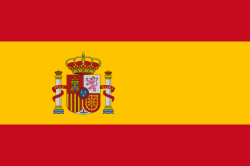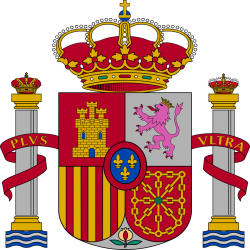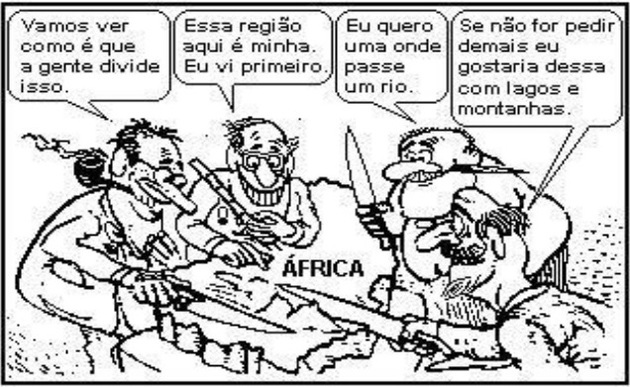 Flag of Spain is the ultimate symbol of the integrity of this country united under the royal crown.
Flag of Spain is the ultimate symbol of the integrity of this country united under the royal crown.
Also known as Rojigualda by the Spaniards, the flag of Spain is bicolor, formed by three horizontal bands: red (top), yellow (center) and red (bottom).
The tracks do not have the same dimension. The central one, yellow, is twice the size of the red bands located at the ends of the flag. The official Spanish flag ratio is 2:3.
In the center of the flag there is a coat of arms representing the regions that make up the country, symbolizing their autonomy. However, under the coat of arms, the figure of the crown is interpreted as the centralized power of the Spanish kingdom over all regions.
The current model of the flag of Spain was introduced by the Spanish parliament in October 1981.
The origin of this flag dates back to the reign of Carlos III who, in an attempt to differentiate the symbol of his kingdom from the others (which used to use the flag with the predominance of the white color), adopted the red and yellow, as they are very easy colors. identify.
Meaning of the colors of the flag of Spain
There is no official meaning for the colors that make up the flag of Spain, however, over the years, some popular and informal interpretations have been attributed.
The red color would be a reference to bravery and conquest of the spanish people, while the yellow color serves to symbolize the riches (the gold) acquired by the country and the joy of the spanish.
meaning of the coat of arms of the flag of Spain
 As mentioned above, framed in the yellow strip of the Spanish flag, is the coat of arms of Spain.
As mentioned above, framed in the yellow strip of the Spanish flag, is the coat of arms of Spain.
Each quarter of the coat of arms represents one of the autonomous regions of the country that, in other times, were recognized as ancient kingdoms: a red lion, representing the kingdom of Lion; a yellow castle, which represents the kingdom of Chatelaine; the red and yellow vertical bars, which represent the emblem of Aragon and Catalonia; and the gold chains, which symbolize the region of Navarre.
At the base of the coat of arms there is also the figure of a pomegranate, symbolizing the city of Granada. In the center of the shield, there are also three fleur-de-lis, representing the house of Bourbon.
On each side of the shield, there are two columns that represent the “gates of the Mediterranean”, symbolizing the meeting between Europe and Africa, in the Strait of Gibraltar.
The Latin expression “Plus Ultra” (“Mais Além”, in Portuguese) is also present on the coat of arms, as a tribute to the great Spanish discoveries and conquests in America.
See the meaning of the others country flags and Portugal flag.



